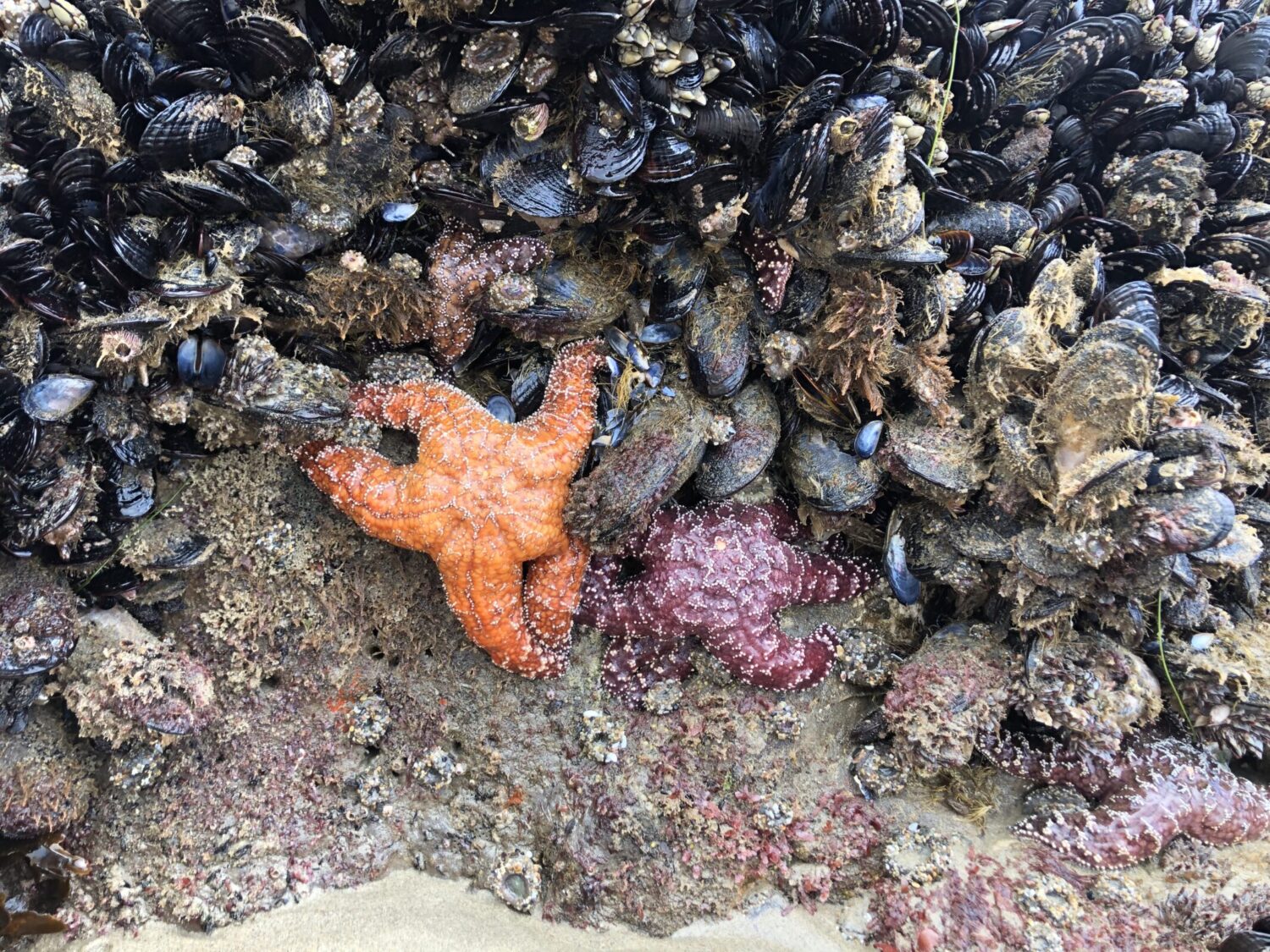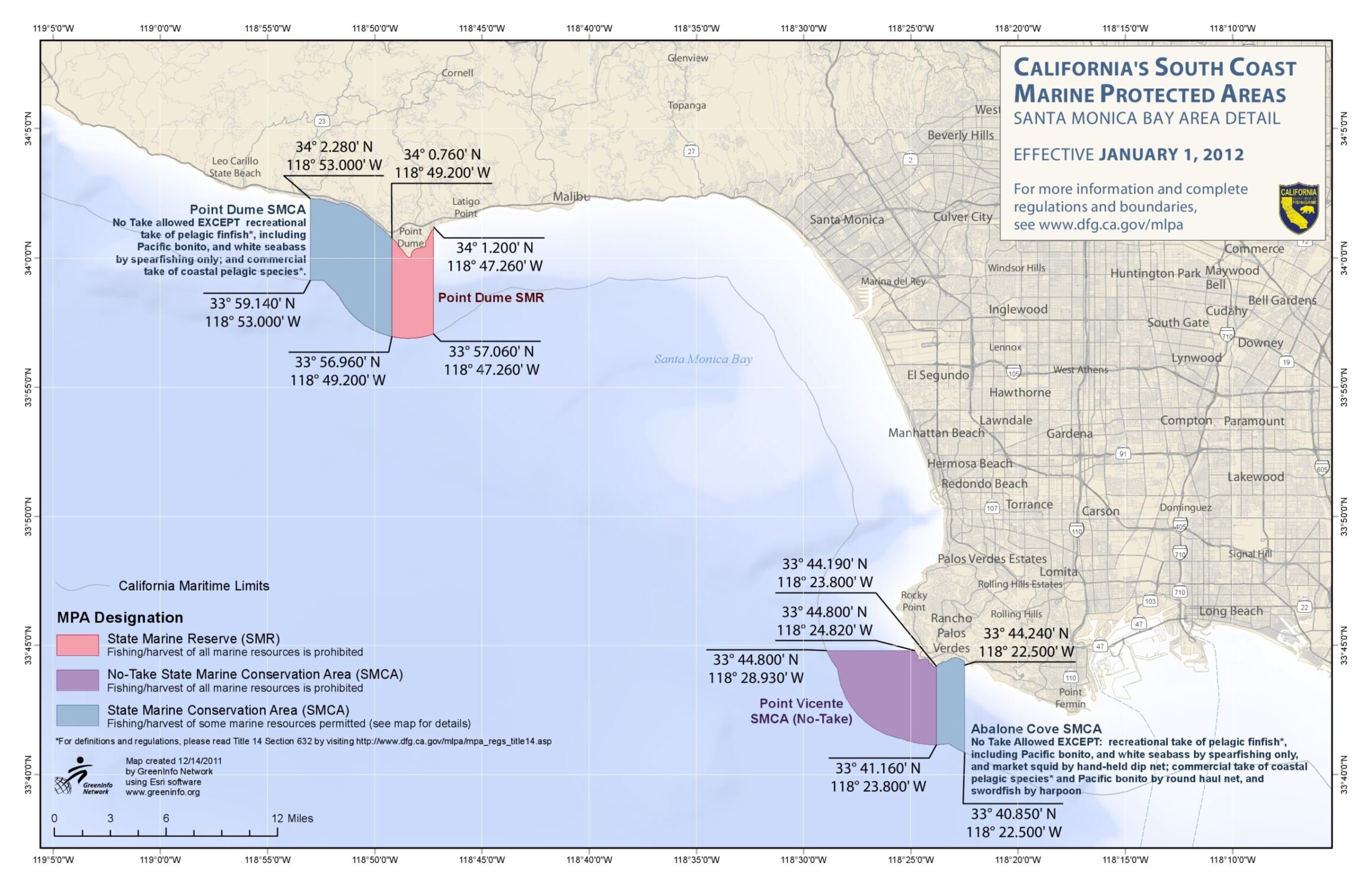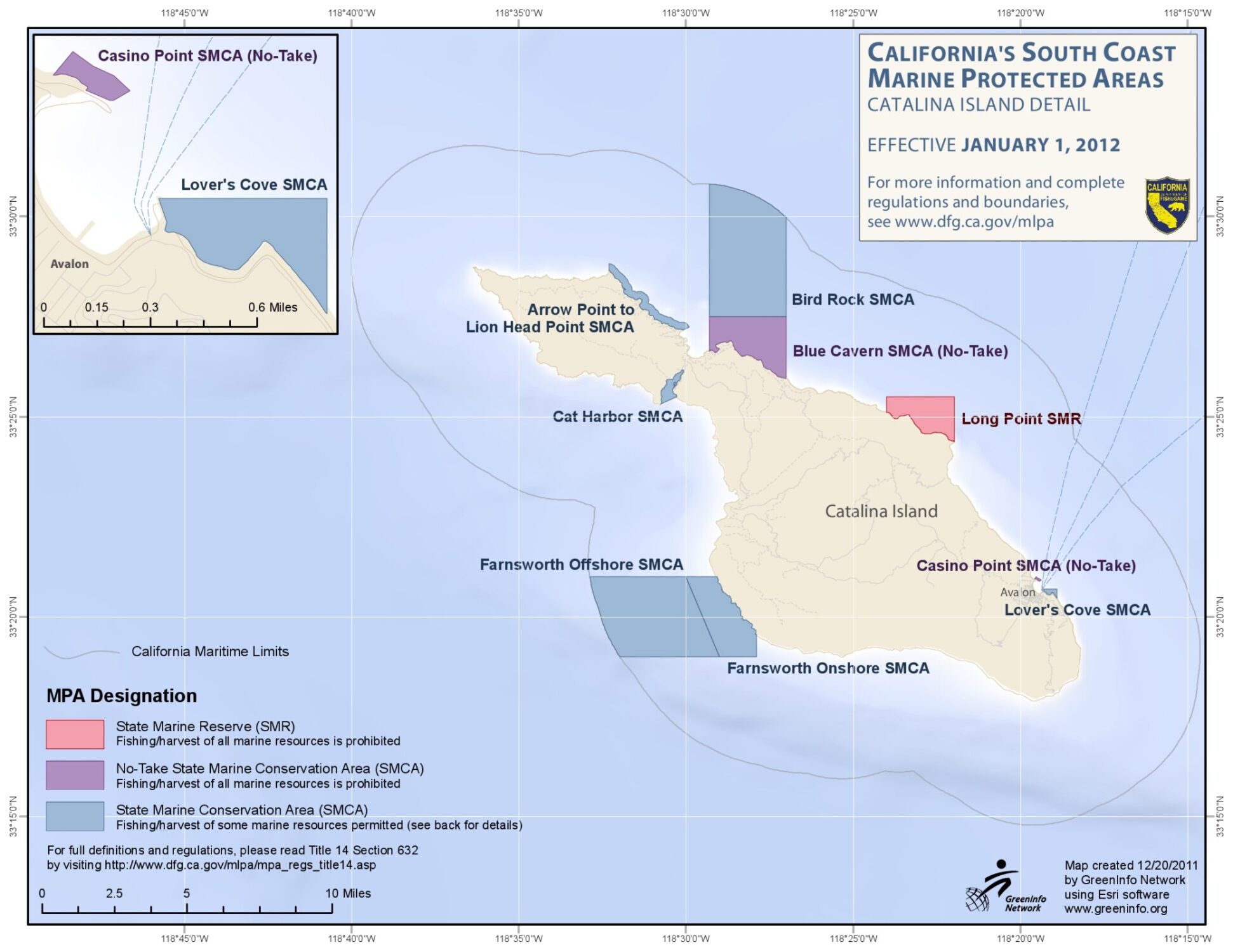8 Reasons to Expand Marine Protected Areas in California

Eight years have passed since Marine Protected Areas started to officially be implemented in California. Forest Leigh Curtis, MPA Watch & Outreach Associate at Heal the Bay, calls out eight reasons why we should expand our network of Marine Protected Areas. Even though we can’t visit our local MPAs and beaches in LA right now, we can reflect on their critical importance during Earth Month.
California’s network of Marine Protected Areas “MPAs” sustains a variety of majestic landscapes and thriving ecosystems by ensuring precious marine life habitats are safeguarded. Just like the beach, MPAs welcome guests to visit and explore.
Los Angeles County proudly manages 13 MPAs in three regions: Point Dume, Ranchos Palos Verdes, and Catalina Island. As part of the California Statewide MPA Network, these 13 areas have special protections in place to preserve their biological, geological, and cultural resources.
MPAs not only offer protection to the marine life and ecosystems within their boundaries, but also provide benefits to all Angelenos. Read on to learn more about all the benefits from MPAs!
1. Fun in the sun
There are so many reasons to go to the beach and visit your local MPAs! Some beachgoers are looking to relax and recharge while others are looking for adventure or physical fitness. Whatever you are searching for, beaches have a lot to offer. Activities such as swimming, surfing, stand up paddleboarding, sunbathing, wildlife watching, and tide pooling can be whole-heartily enjoyed at the beach and in our MPAs.
2. Bigger fish in the sea
MPAs are underwater growth engines. These healthy habitats create the conditions for ample biodiversity, meaning a greater abundance and variety of marine life. Plus, wildlife populations are able to readily replenish and species can develop into larger sizes. Healthy, large animals often spillover into areas outside of the MPAs boundaries, which helps the overall ecosystem flourish.
3. A stronger blue economy
From whale watching excursions and recreational diving to seafood, the ocean is the backbone for both the tourism and fisheries industries. Prior to implementing MPAs in California, some feared that zoning off parts of the ocean from fishing could negatively impact local anglers visiting the area and the livelihoods of commercial fishers. Fortunately, a recent study suggests California MPAs boost local economies, which is also supported by similar research in the EU.
4. More resilient to pollution
The ocean is massive and incredibly deep, but it is not large enough to dilute all of the pollution from humans, nor should we rely solely on it to play that role. Some pollutants, including plastics, become more concentrated in the ocean as they enter the food chain (known as bioaccumulation). Animals high in the food chain such as sharks and sea lions can have contamination levels that are millions of times higher than the water in which they live. Stressors such as pollution and fishing are cumulative, and removing some pressure allows overall ecosystems to become more resilient. MPAs provide a natural buffer for species affected by pollution and allow them to recover.
5. Mitigation against climate change
The ocean can facilitate extraordinary processes that fight against climate change, including carbon sequestration, oxygen creation, water purification, and storm buffering. In fact, new evidence has doubled the predicted carbon sequestration capacity of the ocean’s phytoplankton. Other research indicates MPAs are also effective at housing large, reproductive animals that could help replenish populations across the region when impacts from climate change like warming temperatures and reduced oxygen cause species to die-off.
6. Scalable science-based actions
While MPAs can help mitigate against some impacts of climate change, they can’t take on the climate crisis without our help. California’s MPAs were specifically designed as a network of several small zones to increase the area’s resilience to climate change. Changes in ocean temperature, ocean currents, oxygen availability, sea-level rise, ocean acidification, and storm intensification all lead to a phenomenon known as species redistribution. In other words, as water conditions shift in the ocean, entire habitats and species follow. Few can predict beforehand exactly where habitats will move to, and a network of MPAs helps ensure that there are several stable and safe places to go. More MPAs will increase our ocean’s resilience. MPAs have the power to turn the tides on climate change, but only if we take urgent action to increase marine protection and decrease pollution from fossil fuels and plastics.
7. Learning opportunities for all
MPAs teach us how the underwater world works and what we can do to keep the ocean healthy, safe, and clean. Research divers, students, naturalists, and scientists alike can observe, study, and glean important information from MPAs. This new knowledge can be used to inform our environmental and economic policies to improve life for future generations. #bluemind
8. Inspiring ocean stewardship
Experience more wonder and adventure in your local MPA by volunteering with MPA Watch! As a volunteer, you can work alongside people who care about the ocean. You efforts will inform state and local MPA management about the specific needs of each MPA and how to keep them thriving. You’ll receive training on how to collect much-needed scientific data and stay in the loop about how MPAs are management and how they are changing.
Become a MPA Watch volunteer in Los Angeles by attending a Heal the Bay Volunteer Orientation. Or, learn more about other MPA Watch programs in California.
Maps of MPAs in LA County




